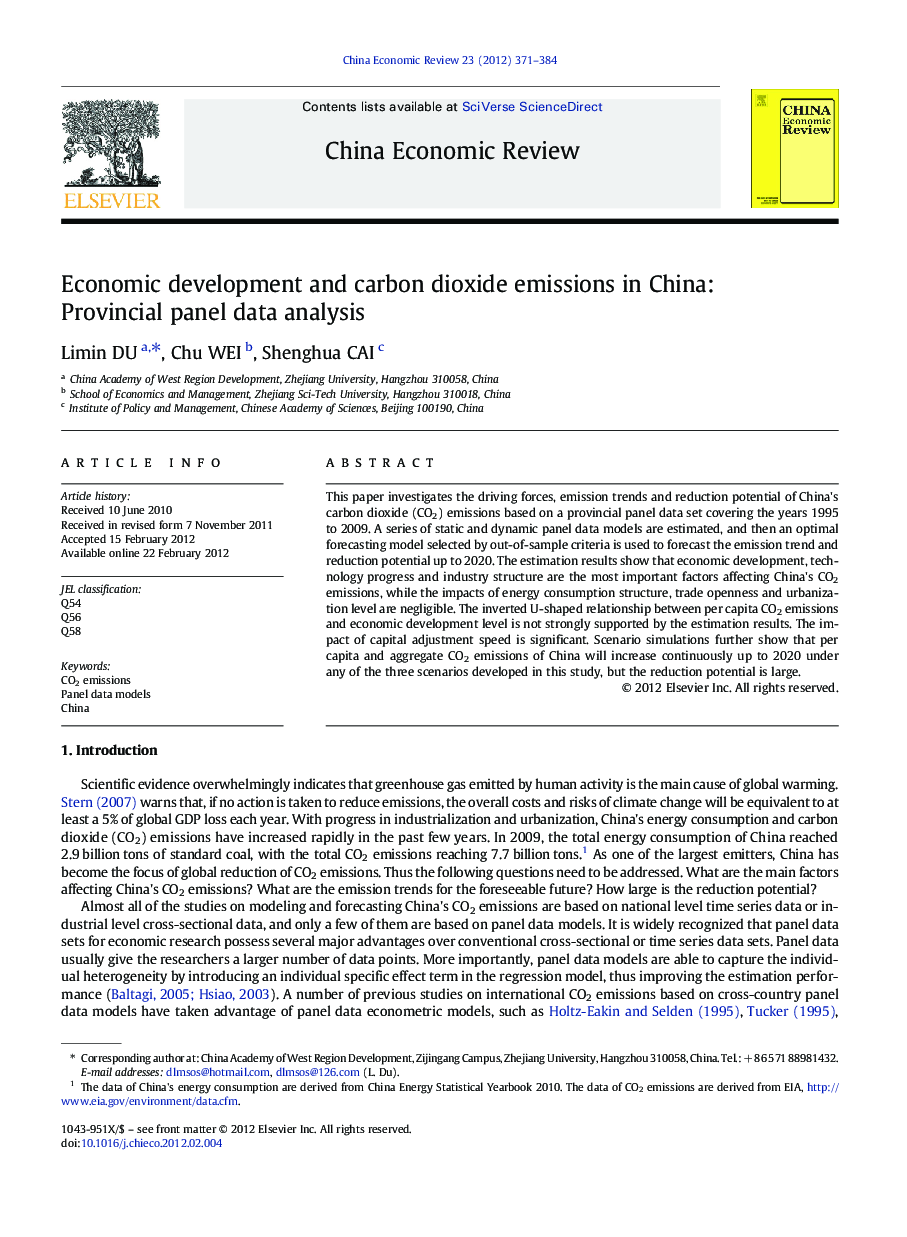| Article ID | Journal | Published Year | Pages | File Type |
|---|---|---|---|---|
| 5047799 | China Economic Review | 2012 | 14 Pages |
This paper investigates the driving forces, emission trends and reduction potential of China's carbon dioxide (CO2) emissions based on a provincial panel data set covering the years 1995 to 2009. A series of static and dynamic panel data models are estimated, and then an optimal forecasting model selected by out-of-sample criteria is used to forecast the emission trend and reduction potential up to 2020. The estimation results show that economic development, technology progress and industry structure are the most important factors affecting China's CO2 emissions, while the impacts of energy consumption structure, trade openness and urbanization level are negligible. The inverted U-shaped relationship between per capita CO2 emissions and economic development level is not strongly supported by the estimation results. The impact of capital adjustment speed is significant. Scenario simulations further show that per capita and aggregate CO2 emissions of China will increase continuously up to 2020 under any of the three scenarios developed in this study, but the reduction potential is large.
⺠We construct a provincial panel of China's CO2 emissions covering the year 1995-2009. ⺠We investigate driving forces and reduction potential of China's CO2 emissions. ⺠The Environmental Kuznets Curve is not strongly supported by the estimation results. ⺠China's CO2 emissions will increase up to 2020, but the reduction potential is large.
